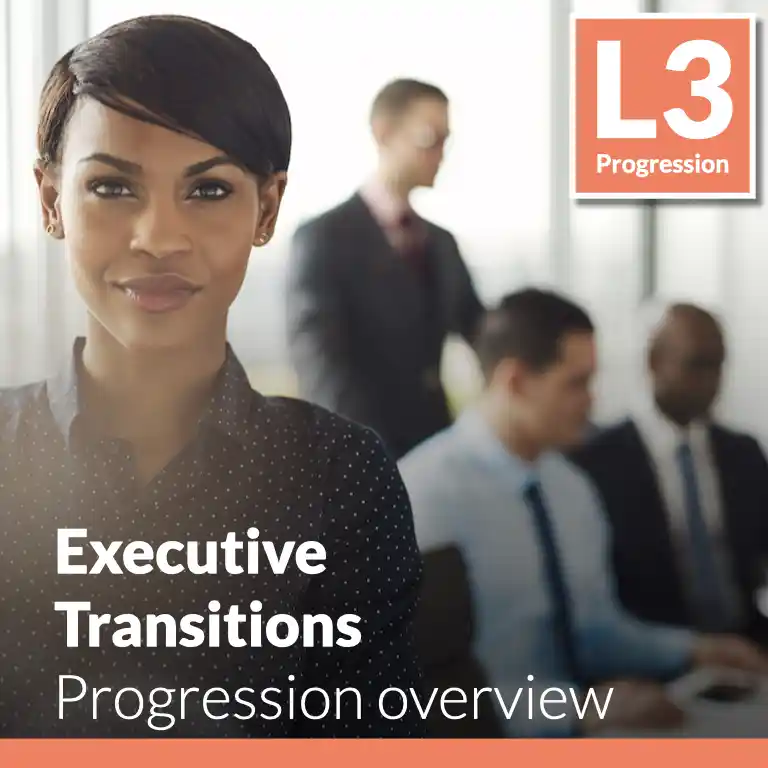Enjoy instant access to a scalable system of proven practices and execution-ready tools. Built to launch strategic HR programs 5X faster!
✓ Enjoy platform access
✓ Create your HR roadmap
✓ View open content in library
✓ Access dozens of practices:
⤷ The HR Strategy program
⤷ Explainers and deep dives
⤷ Supplemental guides
⤷ Insight articles
⤷ Weekly best practices
⤷ And more!
100% Free. No credit card required.
This guide is part of a progression set comprised of Core, Advanced, and Emerging Executive Transition practices.
Gone are the days of ‘40 years of service’ and staying in roles for 8+ years. A Harvard Business Review article stated that the average tenure for C-suite executives lasts only 4.2 years. This demands considering the amount of constant turnover, change, and movement it creates in an organization, especially in large companies. This can be disastrous if the various business functions don’t have a strong foundation in things like company culture and organizational planning. It calls for creating lasting value through strong relationships with other organizations that can provide expertise, insights, joint product or service development, etc. It drives longer-term thinking about the company/business unit/function culture and how well those align with the organization's strategic direction. It creates space for planning to update or improve the behaviors and priority values that employees act on in service of meeting the executive’s plans and initiatives for the broader organization’s performance.
With so much disruption, an executive can play a critical role in making transitions as smooth and thoughtful as possible. However, this doesn’t happen overnight. This can take years of thoughtful planning and decision-making to ensure success. It requires planning within the executive’s organizational purview for replacement strategies for themselves and the critical roles under them. Proactive planning and consideration of high-potential employees can drive developmental mobility and training decisions within the organization. Further, the executives should consider where they might want to land in approximately 4.2 years and how they must prepare to get there. This will take an executive through not only expanding their networks and considering their next career moves but also partnering with the business to support a smooth succession process and ensuring that the team they leave behind comfortably operates within the company’s culture.
Although four years may seem like plenty of time, the various phases of onboarding and ramp-up time, operational run time, and then handover time seem to pass in a flash. An executive has a great opportunity to be a part of shaping the future for themselves and their team, but it will take careful planning from the start to ensure success. Further, most companies expect the executive to have a hand in things like succession planning and expanding external partnerships. These benefit all parties involved (the executive and the organization), so they are worth doing well from the start. This progression level will provide the executive with concrete steps to ensure a smooth transition and a well-thought-through plan for their next career transition.
Creating value through such planning is core to the proposition that a great leader thinks about and acts on the needs of their organization first and foremost while addressing the nature of executive roles in a realistic and planned manner. It creates an environment where culture management becomes a priority, where the organization's role in the larger business world is seen as a driver of greater stakeholder value, and where the identification and development of future leaders becomes something to be actively promoted and championed.
Adopting the practices at this level of sophistication creates relationships that are maximally supportive of the organization’s growth plans and ambitions. It also gives access to new ideas and possibilities driven by constructive partnerships with leading and admired companies from related or completely different industries. It yields a focused effort on cultural enhancement that aligns individual and group employee behaviors, focuses, and prioritization with the business needs and objectives of the organization. It yields plans for replacing key roles (including that of the executive) and critical workforce segment members in a way that solidifies the sustainability of success and continuity of operations. It produces a plan for the executive to continue their career within or outside the company, with a realistic view of how careers are shaped and reshaped and how organizational priorities and preferences can change and evolve over time.
Assessing existing and identifying new potential partnerships that can be leveraged to increase business results and stay up to date on the latest trends in the market.
Understanding the corporate culture and how well the new team aligns (or not) to drive increased business and talent outcomes.
Evaluating potential replacements and their development needs/plans well in advance of a future move.
Considering how to best maximize the presence in the new role and set both the executive and the company up for future success.

Enjoy instant access to a scalable system of proven practices and execution-ready tools. Built to launch strategic HR programs 5X faster!